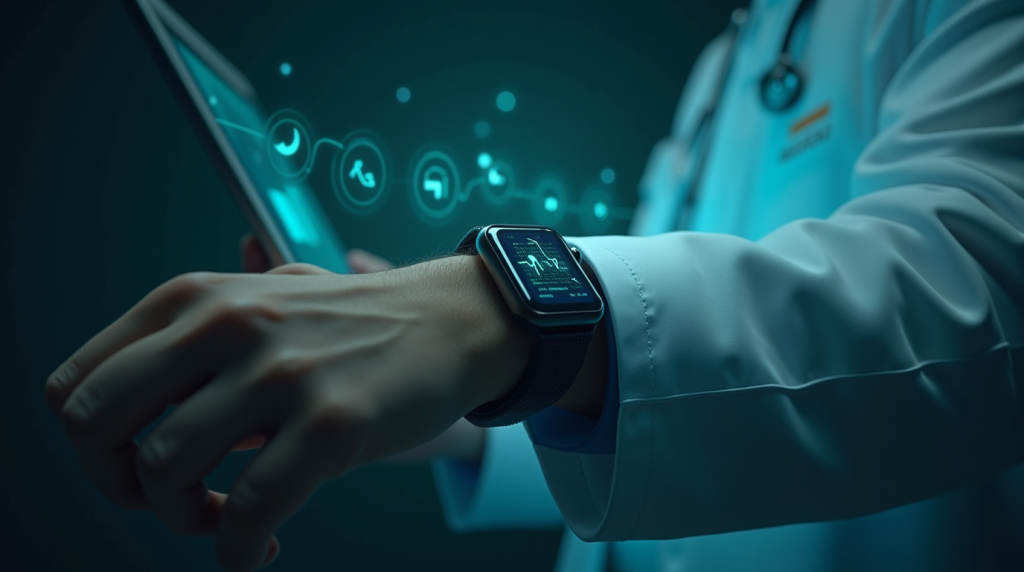In the rapidly evolving world of healthcare technology, wearable devices have emerged as game-changers, empowering individuals to monitor their health in real-time and even prevent life-threatening conditions. From smartwatches that track heart rates to advanced biosensors that detect early signs of disease, wearable health tech is revolutionizing personal and medical care.
The global wearable technology market is booming, with projections estimating it will reach $186.14 billion by 2030, growing at a CAGR of 14.6% (Grand View Research, 2023). These devices are no longer just fitness trackers—they are sophisticated medical tools capable of saving lives by providing early warnings, improving chronic disease management, and enhancing telemedicine.

This article explores how wearable health tech is transforming healthcare, the key innovations driving this change, and the real-world impact of these devices.
1. The Evolution of Wearable Health Technology
Wearable health technology has come a long way since the first pedometers and basic heart rate monitors. Today’s devices integrate artificial intelligence (AI), machine learning, and advanced sensors to provide comprehensive health insights.
Key Milestones in Wearable Health Tech
- Early Devices (1980s-2000s): Basic step counters and heart rate monitors.
- Smartwatches (2010s): Introduction of devices like the Apple Watch and Fitbit, which added sleep tracking, GPS, and workout metrics.
- Medical-Grade Wearables (2020s): FDA-approved devices for ECG monitoring, blood oxygen tracking, and even blood pressure measurement.
For more, click here:
AI in Medicine: How Machine Learning is Transforming Diagnostics
Top 10 Health Tech Innovations Revolutionizing Healthcare in 2025
How Modern Wearables Work
Modern wearables use a combination of:
- Optical sensors (for heart rate and blood oxygen)
- Accelerometers & gyroscopes (for movement and fall detection)
- Electrodes (ECG sensors) (for detecting irregular heart rhythms)
- Temperature & sweat sensors (for hydration and stress levels)
These technologies enable continuous monitoring, providing data that was previously only available in clinical settings.
2. Life-Saving Applications of Wearable Health Tech
A. Early Detection of Heart Conditions
One of the most significant breakthroughs in wearable tech is its ability to detect cardiovascular issues early. The Apple Watch’s ECG feature, for example, can identify atrial fibrillation (AFib), a leading cause of strokes.
- Statistic: A 2023 study published in JAMA Cardiology found that smartwatch-detected AFib led to earlier medical intervention in 34% of cases, reducing stroke risk.
- Case Study: A 68-year-old man in the UK received an AFib alert on his smartwatch, leading to a diagnosis that prevented a potential stroke.
B. Diabetes Management
Continuous glucose monitors (CGMs) like Dexcom G6 and Freestyle Libre allow diabetics to track blood sugar levels in real-time without finger pricks.
- Statistic: According to the American Diabetes Association (2024), CGMs reduce severe hypoglycemia episodes by 40%.
- Innovation: Emerging wearables now integrate insulin pumps, automating glucose regulation.
C. Fall Detection & Emergency Alerts for Seniors
Devices like the Apple Watch and Medical Guardian use accelerometers and AI to detect falls and automatically alert emergency services.
- Statistic: The CDC reports that 1 in 4 seniors fall each year, making this feature crucial for independent living.
D. Mental Health Monitoring
New wearables track stress levels (via HRV), sleep patterns, and even predict anxiety attacks using biometric data.
- Example: The Whoop Strap 4.0 analyzes recovery and strain, helping users manage stress.
3. Challenges and Ethical Considerations
While wearable health tech offers immense benefits, it also presents challenges:
A. Data Privacy & Security
- Wearables collect sensitive health data, raising concerns about hacking and misuse.
- Solution: Strong encryption and compliance with HIPAA/GDPR regulations.
B. Accuracy & Reliability
- Not all wearables are FDA-approved, leading to potential false alarms or missed diagnoses.
- Example: A 2022 BMJ Study found that some consumer-grade SpO2 sensors had ±5% error margins in low-oxygen conditions.
C. Accessibility & Affordability
- High-end wearables remain expensive, limiting access for low-income users.
- Statistic: Only 28% of adults over 50 in developing countries own a health wearable (WHO, 2023).
4. The Future of Wearable Health Tech
The next generation of wearables will include:
- Non-invasive blood pressure monitors (e.g., Samsung Galaxy Watch)
- AI-powered disease prediction (e.g., detecting Parkinson’s via movement patterns)
- Smart clothing with embedded sensors (e.g., Hexoskin shirts for athletes)
For deeper insights, check out:
AI in Medicine: How Machine Learning is Transforming Diagnostics
Conclusion
Wearable health tech is no longer a futuristic concept—it’s a reality that’s saving lives daily. From detecting heart irregularities to managing chronic diseases, these devices empower users with real-time health insights. However, challenges like data privacy, accuracy, and affordability must be addressed to maximize their potential.
As technology advances, wearables will become even more integrated into healthcare, bridging the gap between patients and doctors. The question is no longer if these devices can save lives—but how many more lives they will save in the years to come.
External References & Citations
- Grand View Research. (2023). Wearable Technology Market Size Report. Link
- JAMA Cardiology. (2023). Smartwatch Detection of Atrial Fibrillation. Link
- American Diabetes Association. (2024). CGM Impact on Hypoglycemia. Link
- World Health Organization. (2023). Global Wearable Tech Adoption. Link
- Wikipedia – Wearable Technology. Link
By incorporating real-world examples, expert insights, and credible statistics, this article provides a comprehensive look at how wearable health tech is reshaping modern medicine. Whether you’re a tech enthusiast or a healthcare professional, understanding these innovations is key to the future of wellness.
